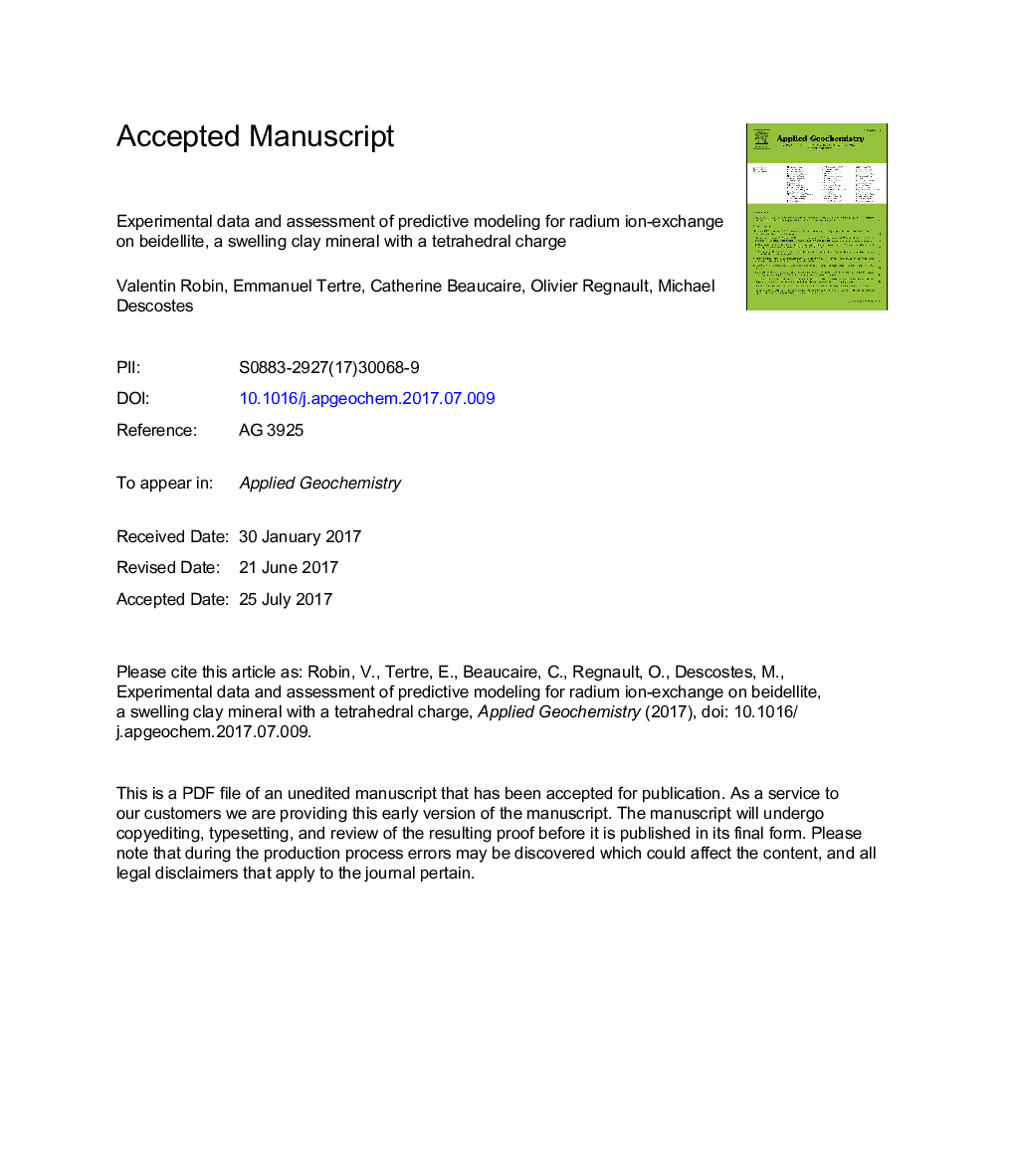| Article ID | Journal | Published Year | Pages | File Type |
|---|---|---|---|---|
| 5752440 | Applied Geochemistry | 2017 | 37 Pages |
Abstract
The presence of swelling clay minerals, such as smectites, is known to be one of the main parameters controlling the mobility of radium in natural environments due to the high adsorption capacities of these materials. However, experimental data and modeling from literature allowing to investigate the adsorption properties of radium towards smectite in a wide range of acidic conditions (2 < 7) are scarce. Moreover, the role of the smectite crystal chemistry (charge location in the layer) remains unclear. Therefore, experimental data for the adsorption of radium onto a swelling clay mineral with a tetrahedral charge (beidellite) are presented here in the 2-7 pH range. Different batch experiments were conducted in order to investigate the effects of both ionic strength (i.e., from 0.027 to 0.11 M in sodium chloride medium) and presence of competing major cations (i.e., magnesium). Experimental data were interpreted using a multi-site ion-exchange model that takes into account the adsorption of major cations (including H+), which usually compete with trace elements for sorption onto mineral surfaces in natural environments. The ability of the proposed model to predict experimental distribution coefficient (Kd) values under various conditions of ionic strength and aqueous cation compositions was tested, and results were compared with those obtained using previously published models. The evolution of radium adsorption on beidellite with pH variation is better reproduced by using a multi-site ion-exchange model, as proposed in this study, than by using a single-site model as that reported in literature. Finally, the implication of the results obtained in this study for the mobility of radium in natural environments was discussed. The significant role of smectites in the adsorption of radium at low pH conditions (pH â¤Â 6) in complex mixtures, which are representative of natural matrices, was demonstrated based on comparison with experimental data previously obtained on organic material and Fe(III)-oxy/hydroxides. The multi-site model proposed in this study for beidellite, coupled with a model from literature for organic matter, was applied in order to predict the role played by the beidellite in the adsorption properties of a virtual complex mixture containing various proportions of beidellite and organic matter. The model shows that smectite can contribute from 80 to 100% to the total adsorption of radium of the complex mixture for pH < 3. Moreover, the predicted results were in good agreement with experimental data from literature obtained with natural peat. Finally, the multi-site ion-exchange model proposed in this study for beidellite could be applied in many natural environments characterized by acidic pH, such as naturally acidic soils (pH â¤Â 5) and acid mining environments (pH â¤Â 1), where predicting 226Ra exchange onto swelling clay minerals requires accounting for the effects of the major cations present in these systems.
Related Topics
Physical Sciences and Engineering
Earth and Planetary Sciences
Geochemistry and Petrology
Authors
Valentin Robin, Emmanuel Tertre, Catherine Beaucaire, Olivier Regnault, Michael Descostes,
